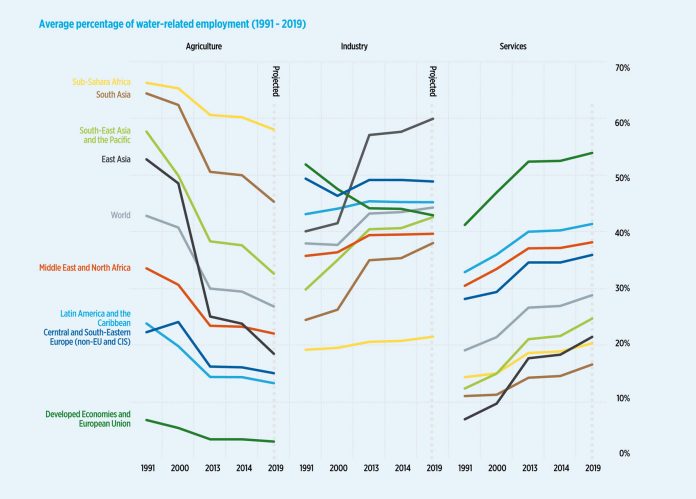
The United Nations has linked ‘Water and Jobs’ to explore how the quantity and quality of water transforms the lives and livelihoods of workers across societies. This transformation began with irrigation agriculture, branched out during the industrial age and diversified throughout the services era.
Today, the UN estimates that half of the world’s workers–1.5 billion people–work in water-related sectors. Of course all jobs depend to some degree on water, “since everyone uses water everyone works in the water sector,” reasons Tobias Barnard, past chair of IWA’s Young Water Professionals (YWP).
Yet the nature of water work shifts based on a region’s level of socioeconomic development. Where are water related jobs? Are they growing? Shrinking? Increasingly at risk?
To visualise this change over time, The Source extracted data from the 2016 World Water Assessment Program. Just as water moves spatially, generating unique life across the landscape, it also appears to move economically, generating a spectrum of jobs across time.
“When you look at who a utility hires, it tells a great deal about its direction and goals,” says Tom Mollenkoph, Senior Vice President for IWA. “It used to be all about chemists and civil engineers. Now they seek communications experts, lawyers, economists, and statisticians.”
The younger generation agrees that socioeconomic changes are redefining what a water professional has been, is, or will become.
“It used to be you get a degree in civil engineering, and that was your route in to the water sector,” observes Randolf Webb, a Young Water Professional (YWP) with Xylem. “Now what’s exciting is that you may be coming from international affairs, or social development, with degrees in computer sciences.”







